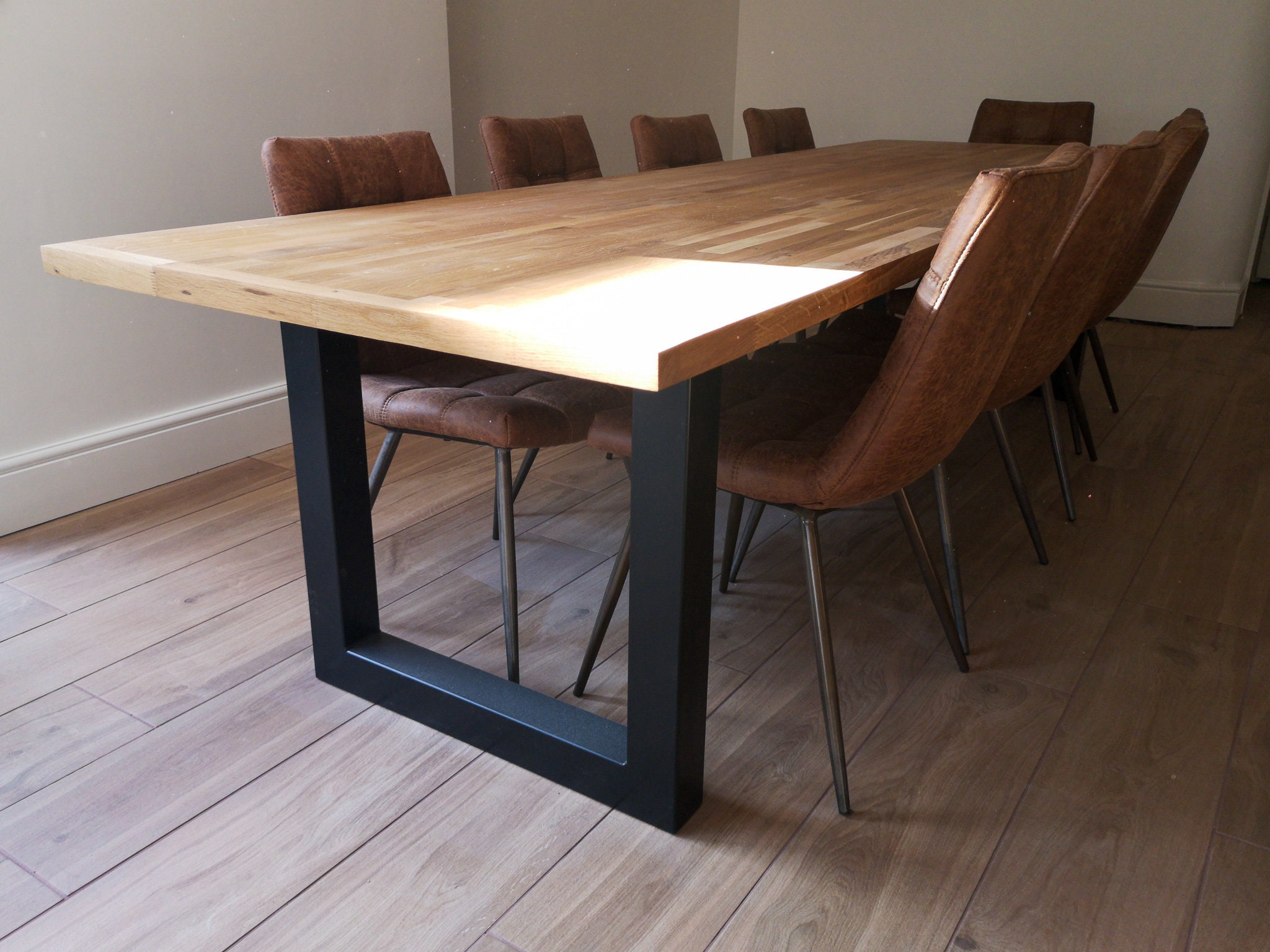A Detailed Take A Look At Table Leg Styles: Discovering the Perfect Match
Selecting the ideal eating table leg style is important for both visual charm and useful functionality. Typical four legs offer classic sophistication and stability, while the stand base supplies enhanced legroom and a modern look. For those with bigger tables, trestle legs guarantee sturdy assistance, whereas hairpin legs present a mid-century contemporary vibe with their minimal design. The x-shaped legs mix modern style with improved stability. Each of these alternatives brings special benefits, making the option greater than simply a matter of choice. Check out further to uncover which style flawlessly complements your dining space and way of life.
Standard 4 Legs
Amongst the different kinds of eating table leg designs, the conventional four-leg design stays a classic choice for numerous families. This timeless arrangement provides an unified blend of functionality and aesthetics, making it a perennial fave. Four legs give balanced assistance, ensuring the table remains stable and with the ability of bearing considerable weight. This is specifically advantageous for households that frequently host large gatherings or utilize their eating table for multiple purposes, such as job or crafting.
From a visual viewpoint, the standard four-leg style can be quickly adapted to different interior styles. Whether crafted from timber, steel, or a combination of materials, these legs can be delicately sculpted, smooth and minimalistic, or anything in between. Their flexibility allows them to enhance both rustic and modern settings seamlessly.
Moreover, the uncomplicated framework of the four-leg design facilitates convenience of motion and placement within a space. Unlike more complex bases, this design reduces blockages, supplying sufficient legroom for diners. In summary, the conventional four-leg dining table leg style weds enduring style with sensible capability, making it an astute option for those seeking both kind and function in their eating furniture.
Stand Base
Typically commemorated for its stylish and space-efficient style, the stand base is a distinguished alternative to the standard four-leg arrangement in dining table leg styles. Without corner legs, restaurants are managed better freedom of activity, making it a perfect option for round and oblong tables that advertise even more intimate and comprehensive celebrations.
Moreover, the pedestal base's central support can manage significant weight, permitting the use of much heavier table tops, such as marble or thick wood. This strength coupled with its aesthetic versatility makes the pedestal base a popular choice in both conventional and contemporary interior settings. It can seamlessly integrate with various design styles, from traditional beauty to minimalist modernity. The main column itself uses a canvas for elaborate styles and artistic expressions, including a component of aesthetic rate of interest beneath the table. In recap, the stand base integrates functionality snappy, making it an improved and sensible choice for diverse eating settings.
Trestle Legs
Trestle legs give a robust and classic structure for dining tables, identified by their horizontal cross-bracing and tough support light beams. Originating from medieval times, this style has advanced yet maintained its vital structure, making it a seasonal favorite in both typical and modern settings. The main trestle beam, often sustained by two or even more upright messages, uses phenomenal stability, permitting bigger table lengths without the requirement for additional legs.
A significant benefit of trestle leg tables is the ample legroom they use. Unlike tables with four edge legs, the absence of blockages at the table's edges gives unobstructed room for chairs and diners, boosting comfort and accessibility. This makes trestle tables suitable for accommodating larger events, whether in a dining-room or a banquet hall.
The visual flexibility of trestle legs is significant. Readily available in a variety of materials such as timber, check out this site steel, and composite, they can be finished to complement a vast range of interior designs. From rustic farmhouse to streamlined modern designs, trestle legs can be personalized to fit specific preferences. Their long-lasting charm and functional advantages make trestle legs a compelling selection for those looking for both style and functionality in their eating table.
Barrette Legs

The allure of hairpin legs hinges on their simpleness and adaptability - dining room table legs. Readily available in a series of products, consisting of steel and brass, they can be finished in many shades to complement different indoor designs. Whether coupled with a rustic wooden table top or a modern glass surface, hairpin legs easily mix functionality with a touch of vintage appeal
Durability is one more significant attribute of barrette legs. Despite their delicate appearance, these legs are crafted to birth significant weight, ensuring the dining table stays steady and safe. In addition, they are relatively easy to install, making them a prominent option for DIY lovers and expert furnishings manufacturers alike.
X-Shaped Legs

Constructed from materials such as steel, wood, or a mix of both, X-shaped legs can be tailored to match different layout preferences. Steel legs often provide a streamlined and industrial feeling, ideal for loft-style houses and modern-day dining areas. On the various other hand, wood X-shaped legs provide a warmer, extra rustic appeal, appropriate for farmhouse or diverse insides. The flexibility in products permits property owners to tailor their dining tables to better fit their general layout scheme.
Furthermore, the engineering behind X-shaped legs makes sure also weight circulation, minimizing the risk of wobbling and enhancing sturdiness. This makes them specifically fit for bigger eating tables that call for added assistance. Fundamentally, X-shaped legs mix sensible design with modern-day looks, making them a classic selection for varied eating atmospheres.
Final Thought
A detailed understanding of table leg styles reveals the distinct characteristics and benefits of each layout. Typical 4 legs supply security and timeless appeal, while stand bases give legroom and a structured look. Trestle legs make sure robust support for bigger tables, and barrette legs introduce a published here mid-century modern visual. X-shaped legs incorporate contemporary design with enhanced security. Choosing the ideal leg style ensures both practical and aesthetic contentment in any eating area.